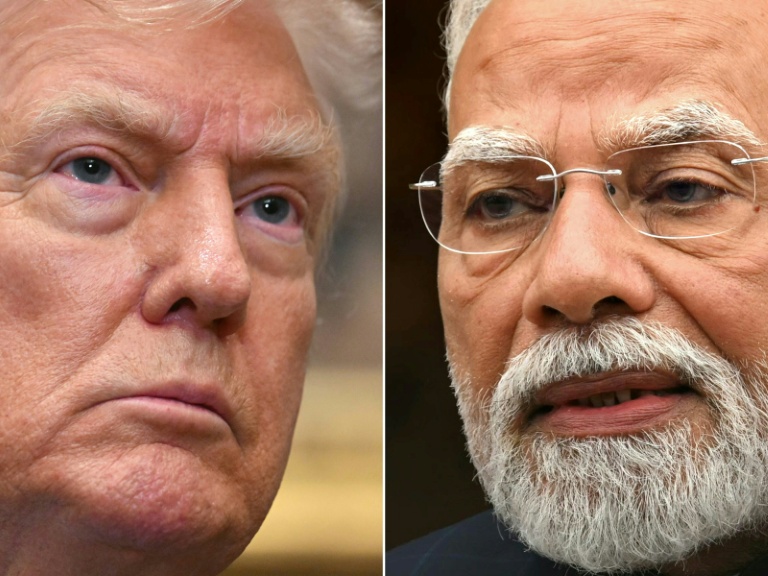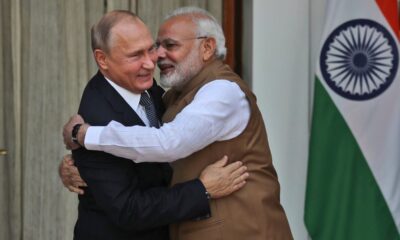World
Modi Proposes Tax Cuts Amid Looming US Tariffs on India

Indian Prime Minister Narendra Modi has proposed significant cuts to consumption taxes as the country prepares for potential trade repercussions from the United States. The proposed changes to the Goods and Services Tax (GST) could provide billions of dollars in annual relief, stimulating demand in an economy facing the threat of increased US tariffs.
US President Donald Trump has threatened to escalate import duties on India from 25 percent to 50 percent. This move is aimed at penalizing New Delhi for its oil purchases from Russia, which Trump argues enable the Kremlin to fund its ongoing invasion of Ukraine. Economists warn that these tariffs could have a detrimental impact on the world’s fifth-largest economy, with Indian exporters predicting a severe decline in orders and potential job losses.
In response to these looming tariffs, Modi made a commitment during an annual address celebrating India’s independence to reduce the tax burden on the public. The proposed GST reforms would simplify the current four-tier tax structure, which ranges from five to 28 percent, into two tiers at five and 18 percent. This change would make essential goods, including small cars and air conditioners, more affordable for consumers.
Analysts at Emkay Global Financial Services have indicated that the tax reform could reduce tax collections by between $13 billion and $17 billion. They view this as a proactive measure to bolster domestic consumption. Furthermore, a substantial number of items currently subjected to the upper 28 percent rate could see their taxes cut to 18 percent, with nearly all items at the 12 percent level moving to the five percent tier.
The fate of Modi’s proposal now rests with the GST Council, which includes representatives from state governments. This council has faced challenges in achieving broad agreement in the past. If approved, these tax cuts could strain public finances, but they may also help mitigate the impacts of potential tariffs and enhance Modi’s standing among the middle class, particularly as elections approach later this year in Bihar, a politically significant state.
Economic expert Deepanshu Mohan from O.P. Jindal Global University emphasized the importance of this proposal in the context of rising tensions with the United States. He stated, “The GST readjustment is a strong response from Modi… It’s Modi telling the middle class: ‘We are trying to make sure you have enough at your end.’” However, he also noted that the initiative reflects ongoing struggles within India’s economy, particularly for the low middle-income segment.
Looking at broader implications, economists have long called for a reform of the GST system. Modi’s announcement emerges amid a backdrop of declining US-India relations, with the potential for Trump’s tariffs to hinder India’s GDP growth below six percent this fiscal year, significantly lower than the central bank’s projection of 6.5 percent.
As the situation evolves, New Delhi‘s response to US pressure regarding Russian oil imports will be pivotal. By late September, the stance of Indian refiners, who demonstrate increasing interest in alternative sources such as US and West African crude, will clarify the nation’s direction. Yet, trade intelligence firm Kpler cautions that until there is a clear shift in policy or sustained changes in trade economics, Russian oil will remain a significant part of India’s crude supply.
With the deadline for tariff increases approaching on August 27, the clarity surrounding US-India trade negotiations remains elusive. While New Delhi expresses commitment to reaching a trade agreement, reports indicate that US negotiators have postponed a planned visit to India, adding to the uncertainty of the situation.
-

 Politics4 weeks ago
Politics4 weeks agoSecwepemc First Nation Seeks Aboriginal Title Over Kamloops Area
-

 World5 months ago
World5 months agoScientists Unearth Ancient Antarctic Ice to Unlock Climate Secrets
-

 Entertainment5 months ago
Entertainment5 months agoTrump and McCormick to Announce $70 Billion Energy Investments
-

 Science5 months ago
Science5 months agoFour Astronauts Return to Earth After International Space Station Mission
-

 Lifestyle5 months ago
Lifestyle5 months agoTransLink Launches Food Truck Program to Boost Revenue in Vancouver
-

 Technology3 months ago
Technology3 months agoApple Notes Enhances Functionality with Markdown Support in macOS 26
-

 Lifestyle3 months ago
Lifestyle3 months agoManitoba’s Burger Champion Shines Again Amid Dining Innovations
-

 Top Stories2 months ago
Top Stories2 months agoUrgent Update: Fatal Crash on Highway 99 Claims Life of Pitt Meadows Man
-

 Politics4 months ago
Politics4 months agoUkrainian Tennis Star Elina Svitolina Faces Death Threats Online
-

 Sports5 months ago
Sports5 months agoSearch Underway for Missing Hunter Amid Hokkaido Bear Emergency
-

 Politics5 months ago
Politics5 months agoCarney Engages First Nations Leaders at Development Law Summit
-

 Technology5 months ago
Technology5 months agoFrosthaven Launches Early Access on July 31, 2025



















